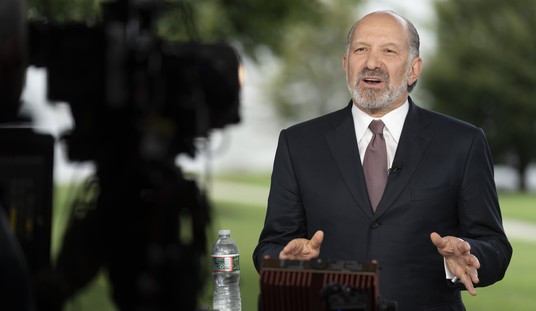The Obama administration now claims the president’s regulatory record is one of the best in U.S. history. Per a recent op-ed by Administrator of the Office of Information and Regulatory Affairs (OIRA) Cass Sunstein:
Contrary to a widespread misconception, and in part as a result of close attention to empirical evidence, there has been a decrease, not an increase, in federal rulemaking during this administration. During the first three years of the Obama administration, the number of final rules reviewed by OIRA and issued by executive agencies was actually lower than during the first three years of the Bush administration.
As evidence, he points to data showing that 931 new rules were finalized during the first three years of the Bush administration, while during the first three years of the Obama administration 886 new rules were finalized.
This is not a complete list of new rules, but a selection chosen by Mr. Sunstein.
According to research by the Competitive Enterprise Institute, the data show that Bush finalized 915 new significant rules while Obama has finalized 1,234.
The problem with Sunstein’s data is not simply a matter of comparing apples to oranges; a better analogy is comparing shopping at Tiffany to shopping at Target. While the number of items in your basket may be smaller, the whole basket of items is far more costly.
Mr. Sunstein further attempted to misdirect the attention when he discussed this issue in his only interview on the topic. He compared the costs of the regulations of the first three years of the Obama administration with the first three years of Bush’s second term. When you compare the first three years of each, you get a much different result.
Regarding regulations considered to be economically significant — defined in law as having an impact of more than $100 million — Obama has had much more of these. In Bush’s first three years, he finalized 151 new rules that cost at least $100 million; in contrast, Obama has finalized 230 new regulations costing at least $100 million.
More Sunstein:
In the last three years, unprecedented steps have been taken to promote evidence-based regulation. Existing rules have been modernized, streamlined and sometimes eliminated. New rules are being examined to ensure that the benefits really justify the costs.
This is very hard to verify, since the cost of the regulatory burden has increased at an unprecedented pace. CEI now puts the cost to our economy of the regulatory burden at $1.7 trillion per year, which is up from $1.2 trillion in 2007.
Apparently, the EPA did not get the message to use sound evidence, either. In 2009, EPA ignored its own experts that questioned its need to declare carbon dioxide a pollutant harmful to humans and in need of costly economic controls. Further, supervisors actively suppressed efforts by EPA experts to question the limited data used to make a determination that will lead to billions of dollars worth of costly regulations.
In September 2011, the inspector general of the EPA confirmed that the EPA issued its finding incorrectly. The EPA inspector general “concluded that the Agency did not complete some of these key requirements and recommended actions.”
The real problem is that we have far too many government regulators. The size of our bureaucracy has exploded over the past two generations, which has led to an enormous increase in the volume of regulations. Measured by the number of pages required to print all of these notices and regulations in the Federal Register, our regulatory burden has grown out of control. In the 1950s, the Federal Register needed only 107,030 pages for the entire decade. For the first decade of this century, 730,176 pages were needed.
Rather than quibble about the number of new rules pushed each year, we need to limit the number of regulators.
The Phoenix Center published an innovative study in the past year documenting the cost of these regulations on our economy. The paper, titled “Regulatory Expenditures, Economic Growth and Jobs: An Empirical Study,” breaks down the cost of each federal regulator on our economy.
The findings are staggering.
Each federal regulatory agency employee cuts the GDP by $6.2 million, eliminates 98 private sector jobs, and destroys the equivalent of the economic value of 134 people.
Creating more jobs in the regulatory sector will not help grow our economy; the truth is dramatically the opposite, and the amount of regulations in the pipeline has grown under the Obama administration. Many complex and costly regulations have yet to be imposed on us but are required under ObamaCare and the Dodd-Frank Financial Act.
If we want to restore economic growth and improve our standard of living, we need to reduce the volume of regulations that choke the life out of our economy.









Join the conversation as a VIP Member